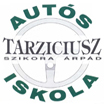Historical Overview

Jaguar XJ Series II (1973-1979)
By this time the first customer deliveries of the two-door coupe, which retained the shorter standard-wheelbase (and which had already been formally launched more than a year earlier) were only months away.
Visually, Series II cars are differentiated from their predecessors by raised front bumpers to meet US crash safety regulations, which necessitated a smaller grille, complemented by a discreet additional inlet directly below the bumper.
The interior received a substantial update, including simplified heating and a/c systems to address criticisms of the complex and not very effective Series I system.
In April 1975, the North American Series II got a slightly revised set of front bumpers which had rubber over-riders covering the full length of the bumper with embedded turn signals at each end. In 1975 V12 XJS / XJ12L cars and in 1978 the 4.2 6 cyl. XJ6L North American cars got the addition of Bosch-Lucas electronic fuel injection in the place of Zenith-Stromberg carburettors.
In May 1977, it was announced that automatic transmission version of the 12-cylinder cars would be fitted with a General Motors three-speed THM 400 transmission in place of the British-built Borg-Warner units used hitherto.
The 1978 UK model range included the Jaguar XJ 3.4, XJ 4.2, XJ 5.3, Daimler Sovereign 4.2, Double-Six 5.3, Daimler Vanden Plas 4.2, Double-Six Vanden Plas 5.3.
In New Zealand, knock-down kits of the Series II were assembled locally by the New Zealand Motor Corporation (NZMC) at their Nelson plant. In the last year of production in New Zealand (1978), a special 'SuperJag' (XJ6-SLE) model was produced which featured half leather, half dralon wide pleat seats, vinyl roof, chrome steel wheels and air conditioning as standard.
New Zealand produced models featured speedometers in km/h, and the black vinyl mats sewn onto the carpets in the front footwells featured the British Leyland 'L' logo.
Though worldwide production of the Series II ended in 1979, a number were produced in Cape Town, South Africa until 1981.
A total of 91,227 Series II models were produced, 14,226 of them with the V12 engine.


 Jaguar XJ Series II
Jaguar XJ Series II
























